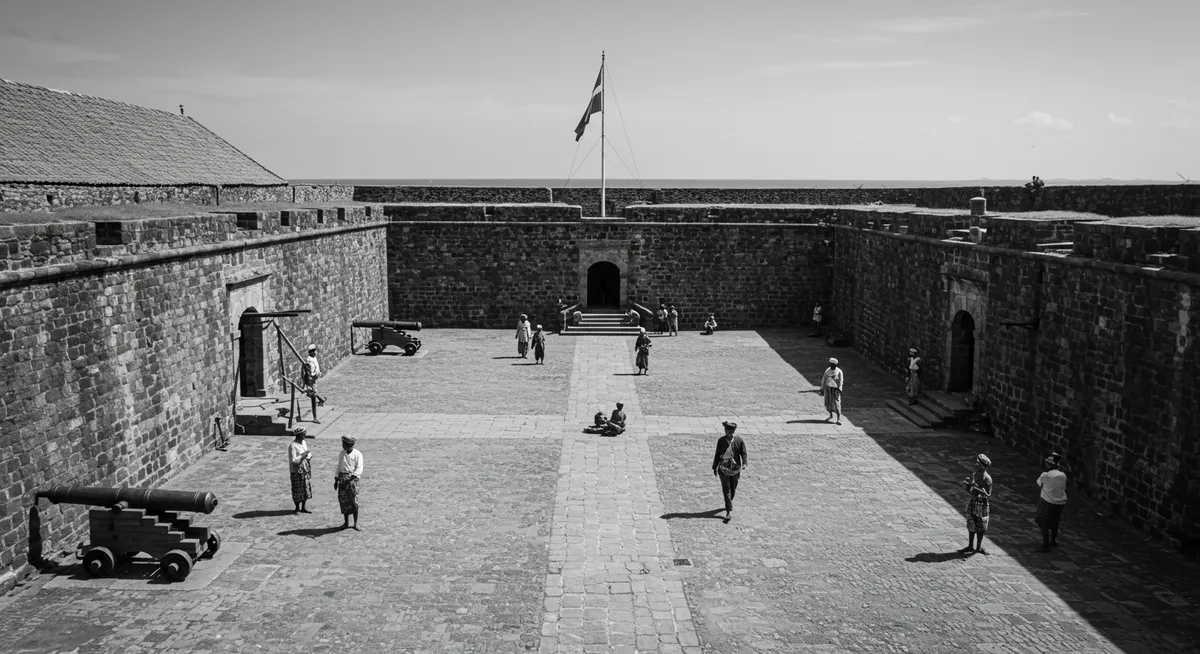
Fort Rotterdam Makassar History: A Guide
Table of Contents
Want to find the best travel deals for this destination? Chat with our travel hacking specialist!
Get Travel HacksCategory: fort-rotterdam-makassar-history
Unveiling the Enduring Legacy of Fort Rotterdam in Makassar
As someone who appreciates historical depth, my personal exploration of Fort Rotterdam truly unveiled Makassar's vibrant past. This guide delves into the captivating Fort Rotterdam Makassar history, revealing its remarkable transformation from a formidable strategic stronghold to a revered cultural landmark that stands proudly today.
From Gowa Fortress to Colonial Stronghold
Originally known as Benteng Ujung Pandang, the formidable Fort Rotterdam Makassar history begins in the 17th century as a strategic fort for the mighty Gowa Kingdom. Constructed from a mix of stone and coral, its initial design reflected indigenous military architecture, serving as a vital defensive point against rival sultanates and early European traders. My own observations reveal the sheer ingenuity of its original builders, a testament to Gowa's power before foreign intervention. This early period highlights the fort's immense significance, shaping the regional power dynamics and setting the stage for Makassar's future as a key port city. For a broader understanding of the region, explore our comprehensive Makassar travel guide.
Dutch Transformation and Maritime Dominance
Following its capture by the Dutch East India Company (VOC) in 1667, the fort underwent significant reconstruction and was renamed Fort Rotterdam, reflecting the Dutch city of the same name. Under Governor-General Cornelis Speelman's command, the fort was rebuilt in the distinctive star-shaped bastioned style, typical of European fortifications. This period is crucial to understanding Fort Rotterdam Makassar history, as it became the VOC's regional headquarters and primary trading post, consolidating Dutch maritime dominance across the archipelago. The fort’s redesigned walls tell a story of colonial ambition and strategic prowess. My tip for visitors: imagine the bustling trade ships arriving as you walk its ancient grounds. Discover the best time to visit Makassar to experience its rich history fully.
From Prison to Cultural Heritage Site
After Indonesian independence, Fort Rotterdam's purpose shifted dramatically. Initially serving various administrative roles, including briefly as a prison, the fort gradually fell into disrepair. However, extensive restoration efforts in the late 20th century preserved its historical integrity, transforming it into a vibrant cultural heritage site. This later chapter of Fort Rotterdam Makassar history emphasizes its enduring value beyond military use, now housing museums like La Galigo Museum, which showcases South Sulawesi's rich ethnographic collections. It's truly inspiring to see a place with such a complex past become a center for learning. Exploring its grounds is among the top things to do in Makassar, offering deep insights into the region’s heritage.
Experiencing Fort Rotterdam Today
Today, visitors to Fort Rotterdam are welcomed by its imposing walls and peaceful courtyards, offering a palpable connection to its past. The fort serves as a window into Makassar’s layered narratives, from the Gowa Kingdom’s might to Dutch colonial rule. You can wander through its well-preserved barracks, explore the museum, and admire the unique architectural blends that define its lengthy Fort Rotterdam Makassar history. It’s an ideal spot for photography and quiet reflection. Personally, I found the tranquility within its walls a stark contrast to the city's bustle, making it a perfect escape. To make the most of your visit, consider adding this gem to your Makassar itinerary for 3 days.
Frequently Asked Questions
What is the historical significance of Fort Rotterdam?
What can I see inside Fort Rotterdam today?
How long does it take to visit Fort Rotterdam?
Fort Rotterdam stands as a profound testament to Makassar's intricate past, a historical gem where every stone whispers tales of kingdoms, colonial powers, and cultural resilience. Its transformation over centuries, from a vital Gowa stronghold to a Dutch trading hub and now a cherished cultural site, encapsulates the essence of Fort Rotterdam Makassar history. Visiting offers a unique opportunity to connect with Indonesia's layered heritage. I encourage you to immerse yourself in its stories and witness firsthand the enduring legacy of this magnificent fortress.